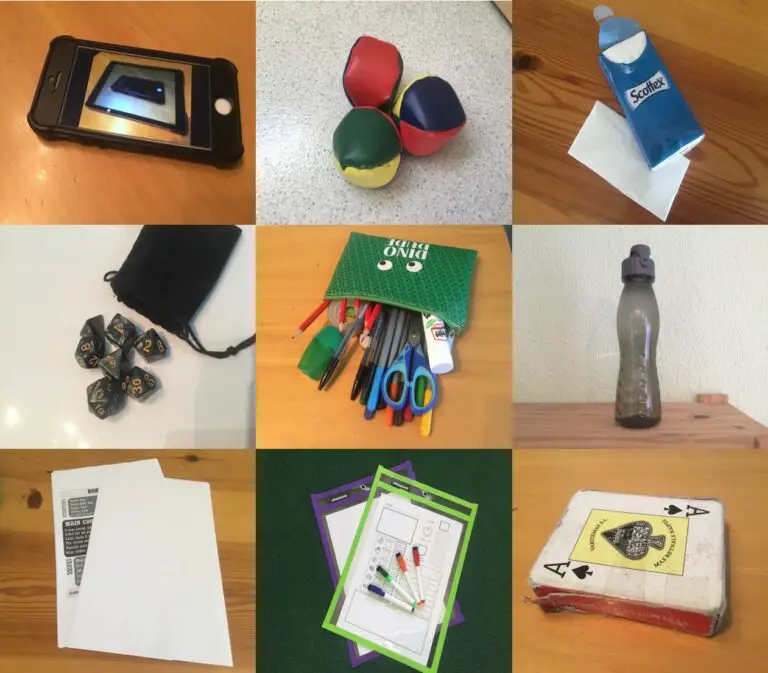“The more that you read, the more things you will know. The more that you learn, the more places you’ll go.”
Dr. Seuss
Reading is important. For EFL/ESL students, it’s a large part of English proficiency tests, and it’s used every day in universities and workplaces around the world. Not only that, but being able to read opens the mind to new ideas, stories and opportunities.

However, of all the four English skills, I find students have the most trouble with reading. Whether it’s lack of interest, insufficient phonological awareness or feeling overwhelmed by long stretches of text, too many English learners lag behind in reading.
There are a number of reasons for this. In fact, I have an article going into depth about them all: Why Don’t EFL/ESL Students Read in English? 4 Solutions.
Here, though, I’m going to describe how I think we can best teach reading, drawing from my experience as an EFL teacher since 2015, and having taught reading to native English children, too.
Before we start, I’d like to point out this is not a guide for teaching the basics of reading to young children. It will not cover phonics and basic vocabulary. Instead, it’s for teaching English learners who can already read basic words and sentences and need to practice understanding and fluency.
If you want to learn more about phonics, I’d point you towards Bridge. They have a good article on phonics and pronunciation here.
So let’s get started!
Interest and engagement is vital
Before planning any reading activities, you have to know your students. Their engagement with reading is the number one factor for success, so choosing the right themes and topics is vital.
If you’ve taught these students for a while, you should have a good understanding of their likes and dislikes. If not, and you’re starting with a new individual/group, you need to perform a needs analysis.
What is a needs analysis? It’s a method for learning everything important about your student(s): their strengths, weaknesses, interests, personality and goals. To learn how to do one, check out my article: Needs Analysis for Private EFL/ESL Lessons: 12 step guide.
With larger groups, it can be tricky to find something that everyone is interested in. Sure, half the class may love superhero movies, but the other half may prefer rom-coms. What do you do?
Well, there are a few strategies here. First, use multiple, similar texts, and let students have a choice. Second, encourage students to compromise on some activities so they’ll get something they prefer later.

The third option is to find something everyone likes, and stick with that. The problem is, that thing might not exist, and if it does, it could be a topic nobody is really interested in, they just don’t mind it. It loses its engaging power.
Something most adult students like is learning about different places and cultures, especially yours. Showing them your hometown and customs is a great way to create rapport. Be careful not to overdo it, though, or they’ll get bored.
The right choice of materials goes a long way
I’m getting tired of reading comprehension exercises with a blocks of text, usually a boring story or an article about societal problems. They’re not bad on their own, but they’re hardly inspiring when you do them every week. I think we can do much better.
There are four factors I consider when choosing texts for reading practice: attractiveness, complexity, variety and authenticity.
1. Attractiveness
I’ve found most reading activities are not that nice to look at. A wall of text followed by a bunch of comprehension questions. You just know your students will groan as soon as you hand it out to them, and that’s a bad start to any activity.
Different formats, layouts and media attract students’ attention. Colours, images and different font sizes make a task look much more appealing.
But it’s not just about being pretty. It’s about changing students’ perceptions of reading, switching up their thought patterns, and adding a higher level of investment and excitement.
2. Complexity
When you read the text, do you think your students will understand the majority of it? The balance between familiar and new language needs to be right, else students will struggle to progress.
As described in this article by Reading Rockets, students should ideally know around 90% of the words they’re reading to be challenged sufficiently. Less than 90% and they’ll get frustrated, and over 95% is too easy.

I would say you could get away with less than 90% as long as you have plenty of support and scaffolding in place. But if students don’t understand more than 2 words in 10, they’ll have a really tough time.
And it’s not just individual words, but grammatical structures and phrases. A student might know the words “I”, “have”, and “played”, but will they recognise it’s the present perfect when they’re all put together?
Before deciding on any text, read it through and check it has a suitable level of complexity.
3. Variation
This is huge. Too many times I’ve seen teachers do the same type of reading activity over and over again. Stories and non-fiction articles. Even if they’re about something the students like, it gets repetitive.
So switch it up. Here are some ideas, but use your own creativity for even more options.
- Menus
- Online forum/social media posts
- Travel brochures
- Comics
- Product labels
- Instructions/recipes
- Theatre/film scripts
- Amazon products and reviews
- Academic papers
- Famous letters and documents
- Poems
- Song lyrics
- Newspaper/gumtree ads
Anywhere you can find written text is viable. A word of warning, though, some texts, especially on social media and in song lyrics, may not be well written or grammatically correct. Make sure your students know this. Avoid them with beginner learners, as they might pick up bad habits.
4. Authenticity
The good thing about choosing texts from a variety of sources, is they’re generally “real”.
With a quick search online, you can find thousands of texts written specifically for EFL/ESL teaching. And they’re fine. But sometimes it’s better to get more authentic material.
Ultimately, students learn English to use it in the real world, so you have to show them real English. Of course, this can be problematic when talking about complexity, so there’s a balance to be had there, especially when teaching lower level students.
Not everything has to be real, but use authentic content where possible.
Focus on one or two skills
There are several important reading skills students should learn:
- Predicting
- Skimming
- Scanning
- Summarising
- Visualising
- Inferring
- Questioning
- Understanding the gist
I wouldn’t say any is more important than the others, although inferring is definitely one for more advanced students.
These skills are important in general life, but also when it comes to English proficiency exams, like the Cambridge B2 First. Unfortunately, teachers rarely think about what skills they’re focusing on.
And you should be focused. For each text, target one, maybe two skills. Any more, and the waters get muddied.

Design questions around practicing those skills. So if it’s scanning, get students to search for specific information and details. If it’s visualising, get students to constantly be imagining what’s going on in their head (maybe drawing some pictures?)
You can explicitly teach strategies for each skill, too. If students know what they’re practicing, they can more easily integrate the techniques they’re learning.
Extract vocab and make a note of it
Reading activities are a great way to expose students to new vocabulary in a relevant context.
But many teachers make the mistake of telling students what the word means, then moving on and not following up. Let’s be honest, students probably won’t remember it in a week’s time.
You have the option of pre-teaching vocabulary. However, I’m not convinced by this strategy, as students don’t have context and interest yet, so the words lack value.
My strategy is to note down new words/short phrases as they come up. Write them on the board. Then, at the end of the session, you can review the new words, with a short game.

But most importantly, keep the vocab for future practice. The best way to do this is adding them to Anki, a spaced repetition app which is perfect for long-term memorisation. It ensures students will remember those words for years and years.
Did you know I’ve written an in-depth, multi-part guide to teaching vocabulary to EFL/ESL students? You can find it here: Best Method to Improve EFL/ESL Students’ Vocabulary: 9 Steps. Or, for more on Anki, go here: Supercharge EFL/ESL Vocab With Spaced Repetition (Anki).
Keep questions light and quick
Do you know what students hate? Long, boring comprehension questions where they have to write extended answers.
Engagement drops off a cliff when you do this, even with the most motivated students. So keep the questions light and quick. Don’t have them all at once, but space them throughout the lesson.
Do them orally, or in small groups rather than everyone writing answers in silence.
Comprehension questions are useful for you to assess students’ understanding and practice those skills mentioned above. But there are other ways of getting more out of the text.
Use the text as the basis for powerful activities
The typical reading lesson has students read the text and answer some questions on it. That’s it. Okay, so why should students care about it once they’ve finished?
It’s such a dry, contained method which misses out on so much potential for learning.
To take your reading activities up a level, get students to use the text. Make them need it.

Here are some examples:
- Read travel brochures, then plan a holiday in groups
- Read online reviews and have students do some research to find the best value product of a certain type and present it to the rest of the class (you can frame this as a business pitch, birthday present, or planning for an event)
- Read a story or cartoon, then act it out (or with advanced students, act out their own story based on the original)
- Turn a written story into a drawn comic strip
- Read food labels and recipes and create a healthy meal plan for the day/week
Any way you can get students to use the text as the source material for another activity is ideal. Use your imagination!
Reading outside of class is important, too
Reading practice should not stop at the end of the lesson. Reading in English is a habit all students can benefit from, even if it’s just a little.
Novels are too much for beginners, but confident intermediate and advanced students may enjoy getting stuck into an extended story, reading a chapter or two every week.

For some great book ideas, head over to my list: 9 Superb Novels to Boost Adult EFL/ESL Reading Skills
Alternatively, students can read news articles, social media, or anything else they can find online. Children often love comics.
The important thing is to find something for each student that they’re going to like enough to keep reading in the long term and that isn’t too difficult.
Conclusion
The standard method of teaching reading in EFL/ESL isn’t good enough. You have the chance to go above and beyond.
With some of the methods in this article and some of your own input, you’ll have your students reading War and Peace in no time! Well, maybe not, but they’ll at least make faster progress and have a good relationship with the written word.






